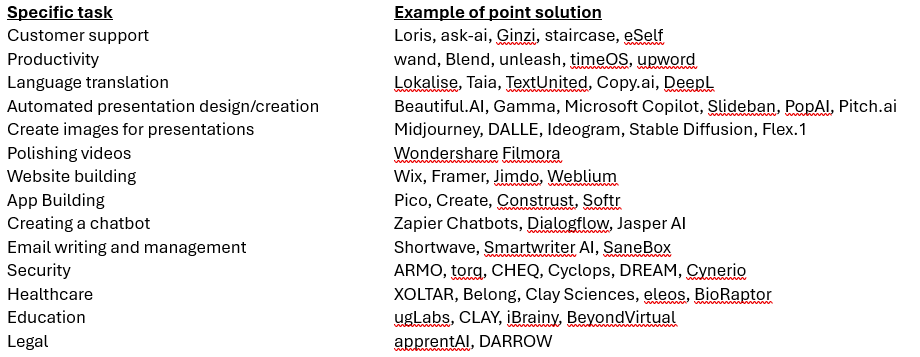
GenAI procurement strategies for SMBs in an evolving landscape
Two years after the launch of ChatGPT, more and more small and medium-sized businesses (SMBs) are concluding that they need to leverage generative AI (GenAI) to stay competitive.
Deloitte has found that significant portions of business leaders are ramping up GenAI investments to chase those promised returns on investment (ROI). The success that this investment generates, however, is heavily dependent on strategic and effective IT procurement.
SMBs can be exposed to challenging procurement processes since they’re unlikely to have an enterprise-grade procurement department staffed with experienced specialists. Added to this, GenAI is a ‘different beast’ with various cultural, ethical and technological considerations. SMBs need to therefore ensure they are assessing it critically to deliver the best outcomes.
The early days of innovation have massive fragmentation of market share
When technological innovations emerge, we see a broad marketplace with no clear winners in the early days. This is especially the case for Generative AI (GenAI). If you are looking to leverage it today, you will find hundreds of vendors with solutions that often cater to very specific problems, from startups working on point solutions to larger players offering an add-on product. While this will certainly consolidate over time as the technology and the offerings mature, solution numbers currently sit in the thousands.
This is a very partial list of GenAI solutions and examples of technology providers for each:

These solutions are all powered by foundational models – another space which is fairly fragmented and rapidly progressing. Each model has its own strengths and weaknesses that makes it more or less suitable for performing specific tasks. Most of the above tools are powered by one of the major models – Google Gemini, OpenAI ChatGPT, and Anthropic Claude – but there are also plenty of other less well-known players in the market.
Another option is no-code tools, like Alteryx, that allow domain experts to build their own solutions using foundational models. Combining point solutions with custom-built ones allows organisations to deliver more results faster.
This idea of leveraging multiple solutions and varying foundational models based on their capabilities is how organisations will harness GenAI to the maximum degree. This, of course, creates a procurement challenge.
Three key principles for the procurement process
Avoid long-term vendor lock-ins: the GenAI space is changing quickly and strategy must change with it to ensure opportunities aren’t missed. Committing to shorter term contracts will make adjustment more straightforward as technology evolves. It will also help to avoid getting locked into high prices as the cost of building and running models is dropping incredibly fast.
Leverage several solutions: a single solution will likely not work in these early days of specific capabilities so teams need to work with multiple point solutions for maximum impact.
Run trials and proof of concept: test how technology performs to check it delivers the expected results.
Architectural considerations
Some solutions, depending on the design, will run within a company’s custody so organisational data never leaves the company’s ownership. Other solutions, however, will require some amount of data to flow to the external service provider. This creates a series of key questions around protection and ownership of data:
- Will the organisation’s data, prompts, or results be accessible externally?
- Who owns the Intellectual Property of the input and the output?
- If there are lawsuits around the training data used in these models, who is liable?
These considerations mean that there should be involvement from IT infrastructure and cyber security, legal, purchasing, and requesting functions for GenAI solutions to be implemented safely and efficiently.
The added bonus of using GenAI during future procurement processes
It would be remiss to mention the transformative and varied impact of GenAI on the procurement function. For example, AI-enhanced supplier risk assessment processes can support decision-making, and it can be used to optimise the spending of procurement teams by identifying inefficiencies and suggesting more strategic alternatives. Using AI to automate elements of contract lifecycle management can simplify procedures and ensure adherence to procurement policies. These examples help to streamline operations and reduce costs, freeing up more time and headspace to focus on strategic projects.
Again, the space is full of newer entries that are attempting to move faster than the market share leaders.
A few examples of solutions in the purchasing space include:

Boosting SMB growth through IT procurement
Adopting a well-considered IT procurement strategy when implementing GenAI empowers SMBs to pursue techniques and tools that will offer real ROI with controlled risk levels. Once onboarded, SMBs can also secure significant competitive advantages by thoughtfully integrating GenAI into procurement and across their operations. It is likely that most SMBs will want a variety of point solutions combined with some broader GenAI foundational tools to deliver on their analytic goals, so procurement needs to be strategic to ensure maximum effect.

